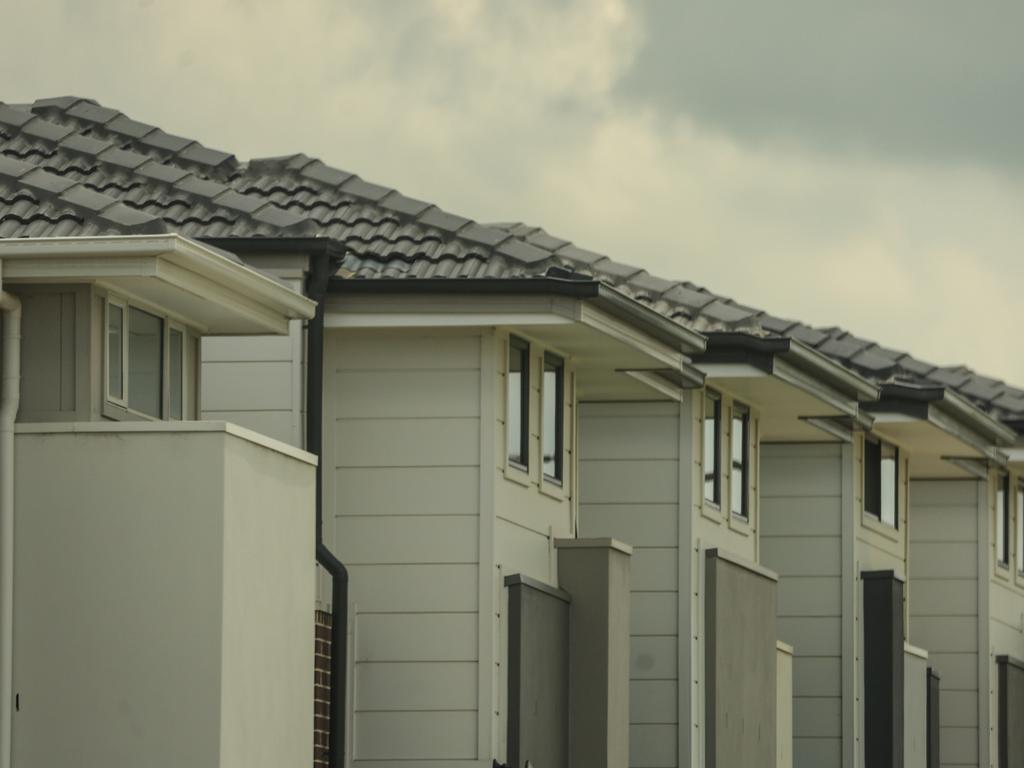A leading economist has delivered a grim prediction about when Australia’s crippling housing crisis will end
The government is spending tens of billions of dollars to address Australia’s housing crisis, but will it move the needle? A top economist has issued a grim prediction.

News
Don't miss out on the headlines from News. Followed categories will be added to My News.
Despite tens of billions of dollars being spent to address Australia’s crippling housing crisis, a top economist has delivered a stark assessment of how long it will take to turn the tide.
And it’s not good news for those battling skyrocketing rents and runaway home prices.
On top of that, social services groups say the crisis is hitting people further and further up the income scale, with a surge in the number of Aussies in full-time paid employment seeking urgent help from homelessness charities.
Shanker Ramakrishan is an economist and finance consulting who has worked at the front lines of Sydney’s real estate sector for decades.
Mr Ramakrishan said he’s never seen things quite this bad.
“Things are really tough out there, whether someone is trying to buy their first home or struggling with the cost of renting a home,” he said.
“Unfortunately, I don’t see an end in sight – not for at least another 10 years.”
Do you have a story? Email tips@news.com.au

Mr Ramakrishan, a broker at SR Business and Finance Consulting and a panel judge at the upcoming PropertyGuru Asia Property Awards, said not enough is being done to address red tape.
“Time and time again, I see property developers who’ve gone to councils to secure a pre-lodgement meeting, they’re told things look good, then they lodge a development application and it’s knocked back,” he said.
“They end up having to go to the Land and Environment Court to appeal the decision and it takes years, sometimes two or three years of being in court.
“Unless you’re a developer with deep pockets, able to fund legal costs and huge holding costs, why would you bother rolling the dice?”

Some state governments have taken steps to overhaul planning controls, with the New South Wales Government unveiling a suite of measures to simplify and streamline development controls in key areas.
But the move met stinging resistance from a number of Sydney councils that were opposed to increased density in their suburbs.
Countless small to medium sized builders have gone bust in recent years as soaring costs and painful delays shrunk profit margins to unsustainable levels, Mr Ramakrishan said.
Recent data from the Australian Bureau of Statistics showed building approvals are at an all-time low, despite efforts by the Federal Government to spark activity in the construction sector.

Prime Minister Anthony Albanese’s flagship policy focus is housing, with some $32 billion committed to address the crisis impacting much of the country.
At the centre of it is a goal to build 1.2 million new homes over the coming five years, flooding the market with supply and easing pressure on prices.
But many experts believe the target is unreachable thanks to a lack of confidence among builders, high materials prices, a chronic skilled labour shortage, and frustrating red tape at council and state government levels.
“I think it’s an ambitious number,” Mr Ramakrishan said. “Very ambitious.”

Unease about the effectiveness of the government’s response comes as a new report highlights a new aspect of the housing crisis.
The results of a seven-year longitudinal study examining the needs of more than 70,000 households seeking assistance from homelessness services has been described as a “wake-up call”.
The report, Inside the Front Door, identified a “surge” in the number of people in paid employment reaching out for emergency assistance.
“When people in paid employment can’t find a home you know something is seriously crooked,” Homelessness Australia chief executive Kate Colvin said.
Over the seven-year period, the number of households seeking accommodation support for the very first time jumped from 4.5 per cent to 7.7 per cent.
At the same time, difficulties in rehousing people means an increasing number are returning to homelessness services because they remain unhoused, and support periods are growing longer.
According to the study, 46 per cent of people accessing support services are returning clients.
“The increasing number of people returning to homelessness services is a clear indication that their needs are not being met,” Ms Colvin said.
“The solution involves greater investment in social housing, and resources to provide longer term support, particularly for people with significant mental health and other issues who are stuck in homelessness.”

The number of households reporting instances of domestic and family violence has also more than doubled in seven years, from 7.5 per cent to 15.8 per cent.
When someone approaches a support service for help, it takes an average of 20.7 days to find a solution, the study found.
That’s up 67 per cent on seven years ago, when the average duration of support was 12.2 days.
“The need to work with each person for longer to help them find a home is exacerbating pressure on homelessness services, resulting in them supporting less people overall even as demand increases,” Ms Colvin said.
“Rents are at a fever pitch and already stretched providers simply can’t keep up with demand. Our housing system is broken, yet we don’t have the support for people who need safe and secure housing, like women and children fleeing violence.
“Without extra resources, services have reached their capacity limit and are at breaking point.
“The housing crisis means they have more people coming through the door, more people stuck in homelessness for longer, and less capacity to rehouse people.
“Workers at the front door of the homelessness service system are facing the open floodgates of government housing policy failure.”
More Coverage
Originally published as A leading economist has delivered a grim prediction about when Australia’s crippling housing crisis will end









